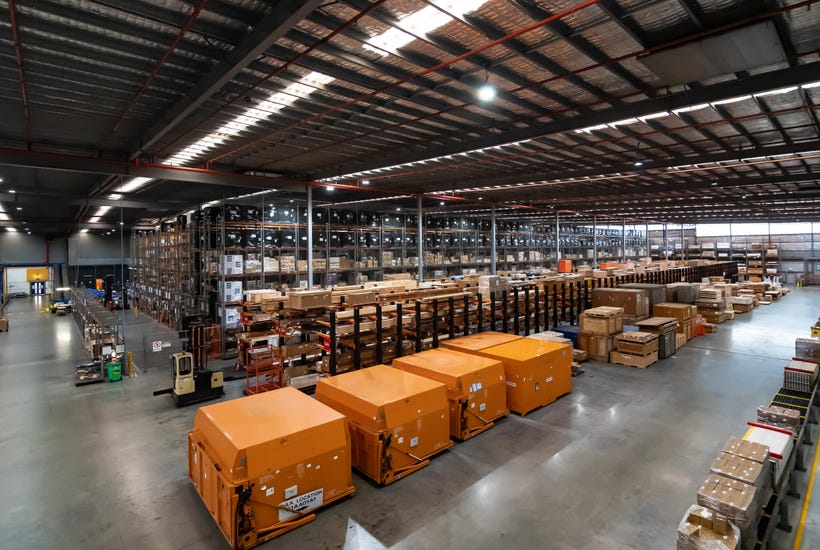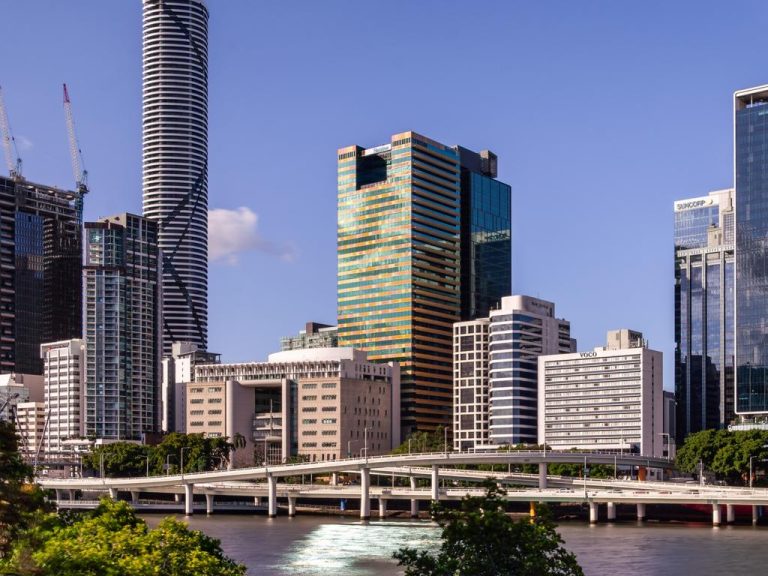Industrial property remains in hot demand after a record year

After a record-breaking 2021, the industrial property sector is set for another bumper year as the pandemic accelerates the take up of online shopping.
PropTrack economist Anne Flaherty said local investors are increasingly competing with offshore buyers for Australia’s industrial and logistics space.
Ms Flaherty and other experts expect industrial property to remain in hot demand this year.
“Competition for these assets is expected to increase as more offshore investors look to increase their exposure to Australian industrial assets,” Ms Flaherty said.
“Record low vacancy rates will support rent growth, and growing investor demand should support further yield compression and growth in land values.”
Underpinning the strong demand for industrial space is the accelerated growth of e-commerce during the pandemic as more consumers shop online.
“Growth in e-commerce has been a major driver of both occupier and investor demand, and with Australia’s online retail penetration rate predicted to only increase, this demand is unlikely to slow,” Ms Flaherty said.
She noted e-commerce penetration peaked at 15% last year and is predicted to hit 20% by 2025.
“If you consider that our population will have grown by 2025 as well, 20% of an even larger population than we are now will require more industrial and logistics space to facilitate this growth in e-commerce.”

Industrial and logistics properties are the most in-demand assets with commercial property investors. Picture: realcommercial.com.au/for-sale
Industrial assets are hot commercial property
Ms Flaherty said industrial assets have undisputedly been the most in demand with commercial property investors in recent years.
“Unlike many other commercial asset classes which have faced challenges since the onset of COVID-19, the industrial sector has arguably benefited from the pandemic,” she said.
Sales volumes collapsed in other commercial sectors in 2020 due to increased investor uncertainty, but the opposite occurred in industrial, which had a record level of sales.
“Demand was even higher in 2021, romping past the previous year’s record with nearly double the volume of sales,” Ms Flaherty said.
In the new PropTrack Industrial Snapshot 2021, Ms Flaherty noted Real Capital Analytics data showed there was $28 billion worth of industrial sales last year – the highest volume on record and a 72% increase over 2020.
Several large portfolio deals drove the result, including ESR’s $3.8 billion purchase of Blackstone’s Milestone logistics portfolio and the Logos acquisition of the Moorebank Logistics Park from Qube for $1.67 billion.

Several large portfolio deals drove record industrial sales in 2021, including the $802 million sale of Qantas land in Sydney. Picture: realcommercial.com.au/for-sale
Logos also led a consortium that acquired 14ha of mostly undeveloped land near Sydney Airport from Qantas for $802 million, which will be developed into a logistics, e-commerce and last mile logistics hub.
Ms Flaherty said growing occupier demand has been driving more investors to the industrial sector.
“Across Australia, industrial vacancy has been steadily declining over recent years, falling to record lows in the second half of 2021,” she said.
Australia’s industrial vacancy rate fell to a record-low 1.3% in the second half of 2021, according to CBRE Research.
“What makes this particularly impressive is that vacancy has fallen despite the fact that the amount of new industrial supply being built has been above long-term average levels for each of the last three years,” Ms Flaherty said. “In comparison, office vacancy is sitting at 12.1%.”
Sass J-Baleh, CBRE’s head of industrial and logistics research Australia, said CBRE expected vacancy to remain stable throughout 2022 and leasing transactions will remain in line with or below the long-term average, as a shortage of available supply continues to shape the market.
“Although the forecast new supply for 2022 matches the 10-year average for occupier take-up, the shortfall in recent years has generated significant pent-up demand for space,” she said.

Demand from investors and occupiers drove the industrial and logistics sector to new heights in 2021. Picture: Getty
Ms J-Baleh said demand from investors and occupiers alike drove Australia’s industrial and logistics sector to new heights in 2021, with records smashed on a host of key metrics.
“Institutional investment appetite continues to favour I&L due to high quality covenants in those institutional-grade assets and confidence in the ability to collect income, with multiple domestic and offshore capital sources competing to elevate capital allocation to the strongest performing sector.”
According to CBRE and Colliers, there is more than $50 billion of capital looking to be deployed in Australia’s industrial and logistics sector over the next 12 months.
The weight of capital-seeking opportunities far outweighs the availability of assets for sale, Colliers managing director for industrial Gavin Bishop said.
“Private investors, corporates and selected institutions looking to recycle capital are expected to take advantage of this factor in 2022, and large portfolios will continue to be brought to the market,” Mr Bishop said.
“It is likely that new pricing benchmarks will be set in 2022, and we expect yields have a little further to run despite the 110 basis points of compression recorded in 2021.
“By mid-2022, average yields in Sydney and Melbourne are forecast to be under 3.50% for prime core assets.”
Industrial now asset of choice for offshore buyers
Ms Flaherty said local investors are increasingly competing with offshore buyers for industrial properties in Australia.
Industrial properties have overtaken offices to become the asset of choice among offshore buyers, she added.
“Historically, offshore buyers have favoured offices when investing in Australia’s commercial property market, but this has now well and truly shifted to industrial,” Ms Flaherty said.
“Last year, offshore buyers accounted for 41% of the total volume of industrial sales in Australia, the largest proportion on record.
“Offshore investors are increasingly recognising the strong fundamentals underpinning Australia’s industrial sector.
“What’s more, Australia’s relative economic resilience throughout the pandemic is attracting more offshore investors to our market.”







